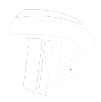Application of screen printing
Textile printing Fabric printing refers to the process of forming patterns on fabrics by printing. The printing methods include: type plate printing, screen printing, rotary screen printing, transfer printing and multi-color dye printing. Screen printing comes from type plate printing (including type paper plate and zinc plate), which starts from manual operation, gradually moves to semi-automatic and fully automatic, and then develops from flat screen printing to round screen printing.Direct printing of coatings Pigment direct printing is to directly print the [...]

